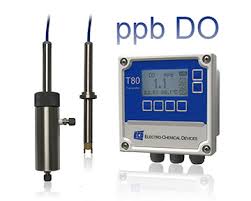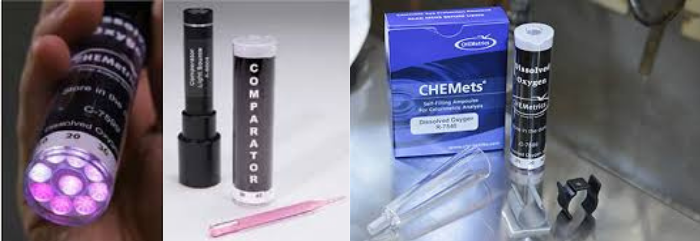
Dissolved Oxygen Testing and Monitoring
As we discussed in our previous article, the number-one cause of boiler tube failure is oxygen attack. To minimize the risk of this, you can remove dissolved oxygen from feedwater mechanically and/or with oxygen scavengers.
Both deaerators and sparge valve systems are mechanical strategies to protect the boiler system. They are designed to heat feedwater and vent the oxygen to the atmosphere. If the deaerator is operating properly, it will remove soluble oxygen, lowering the oxygen count down from 3 or 4 parts per million to 7 parts per BILLION.
How can we assure the deaerator is functioning properly? We can test for dissolved oxygen and determine the efficiency of the deaerator. This test is normally performed when the feedwater sulfite feed is shut off for a time; the dissolved oxygen test can be a valuable tool in measuring its function. The procedure used to confirm the quantity of dissolved oxygen has changed over the years. The procedure for capturing the sample remains critical.
Capturing a Sample to Read Oxygen Level
Here is how to capture a sample for testing dissolved oxygen. This part is critical and hasn’t changed much over the years. To capture a representative sample, you want to set up a flow of water leaving the deaerator. You must cool it and make sure the sample line is free of any leaks. The piping material used to move the sample to the testing vessel should not be copper or neoprene. Flow and timing are also important; sample should be run for a long time to ensure proper analysis.
Reading the Oxygen Level
The practice of using indigo carmine to determine dissolved oxygen was introduced around 1959. This required capturing a water sample as described above. Indigo carmine was mixed with caustic; this mixture sat for 30 minutes. From here, the indigo carmine reagent was then injected into the sample water using a syringe. A color change indicated the ppm of dissolved oxygen. This was an arduous task and the procedure was challenging, especially in the confines of a boiler room.


Today’s test procedure is far easier, but equally critical. An ampule with reagent inside is inserted into the water sample. When the tip of the ampule is broken off, the ampule sucks in a small and precise quantity of the water sample. The water within the ampule will turn red if there dissolved oxygen present. The more intense the red color, the greater the concentration of dissolved oxygen in the water. The operator can read it and, within a few seconds, can match the color to a provided chart.
We’re lucky to have access to these far simpler tests today. Capturing the sample remains important, but the procedure for testing is far easier.
For even greater accuracy and constant monitoring, you can install in line analyzers which detect dissolved oxygen levels continuously.
Minimize Dissolved Oxygen to Preserve Your Equipment
The takeaway is that you should use all the tools at your disposal to minimize dissolved oxygen in your boilers. Increasing feedwater temperature along with dissolved oxygen testing and proving for aerator efficiency all can minimize oxygen problems.
If your sulfite use is high and doesn’t match up with mass balance expectations, check dissolved oxygen level in the feedwater. There may be functional problems in the deaerator or leaks allowing dissolved oxygen into to the system. In high pressure boiler systems, this becomes even more critical.
Talk to the experts at Chemtex for help taking control of your water treatment system. Our team is composed of seasoned water treatment professionals who can help you evaluate and improve all of your operational systems.


/NQA-ISO-9001-Logo-ANAB.jpg)